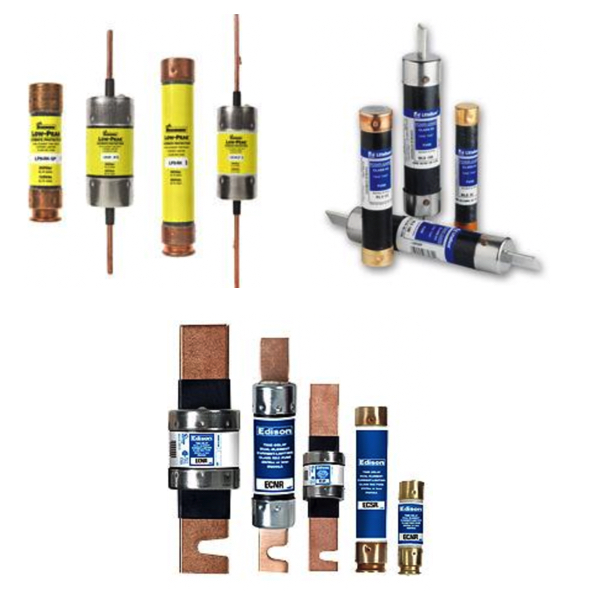Fuses

Fuses are necessary parts of electrical systems, giving overcurrent protection by interrupting excessive current flow to keep circuits and equipment from being damaged. These devices, which include kinds such as cartridge fuses, glass fuses, and auto fuses, work by utilizing a fuse wire or link that melts when the current exceeds the rated capacity, effectively breaking the circuit. Their use is widespread in many areas, like cars, factories, and homes, where they help keep the safe operation of electrical equipment running smoothly and without excessive interruption.
Distinct functions are served by automotive fuses and medium-voltage fuses. The former is found in vehicle electrical systems, while the latter is used in applications requiring high power, like transformers and motors. Fuses must be selected according to voltage, current rating, and breaking capacity—more or less, an electrical "must not exceed" specification—that guarantee fuse compatibility with diverse vehicular and industrial power systems. Incandescent burn-out indicators (a good way to tell a fuse is blown) are available on some modern fuses; the visual indication makes it quicker and easier to find problematic fuses.
More Information about Fuses
Niche applications call for specialized fuses, such as power fuses and axial fuses. These target the solution that particular needs require, but selecting the proper current-limiting device is paramount when safe and reliable performance is demanded.
FAQs
What is system voltage drop?
System voltage drop refers to the reduction in voltage as electric current flows through the resistance or impedance of the electrical distribution system, leading to a lower voltage at the load end compared to the source.
Should voltage rating and interrupting rating be considered in fuse selection?
Yes, voltage rating and interrupting rating must be considered in fuse selection to ensure the fuse can safely handle the system's voltage and interrupt fault currents without causing damage or safety hazards.
Breakers vs Fuses
Fuses
Fuses are safety devices that are intended to provide protection to both equipment and people in the event of a power surge or an overcurrent situation. A fuse can provide this protection by using a small piece of wire that is sacrificial, and is intended to burn up when too much current is passed through it. When this happens, the fuse eliminates the flow of electricity in that circuit until it is replaced. The size and type of wire that is used in the fuse will dictate how much current can pass through that individual fuse. So the main thing to remember is, when a fuse blows, it must be replaced and cannot be reused.
Circuit Breakers
Circuit breakers are intended to be reused after they are “tripped” during a power surge or an overcurrent situation. Much like fuses, circuit breakers are designed to trip at a certain current level. This is intended to protect both equipment and anyone in the area of that particular circuit. Circuit breakers can be found in just about any variation from single phase, low current applications to three phase, and high current applications.
As a general rule: fuses are more simplistic and reliable. They cost less initially and are better suited for individual circuit protection. However, they can create more cost over time with each use and may create hazards due to the exposed connection points. Whereas circuit breakers offer better branch circuit protection and do not need to be replaced after each use. They are more expensive initially and, because of their complexity, are more prone to failure over time.

